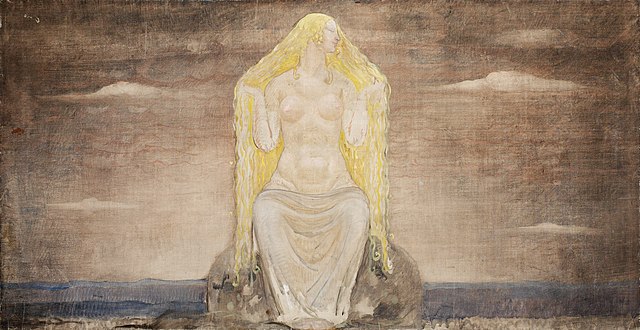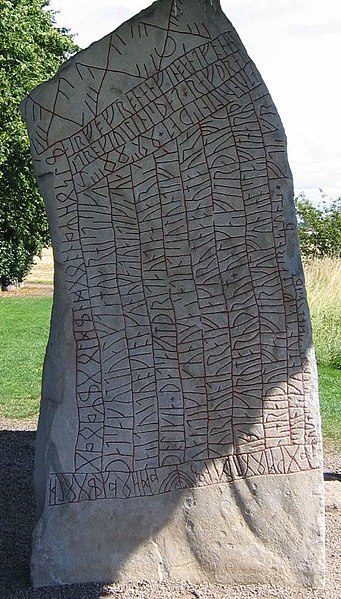In Norse mythology, the Vanir are a group of gods associated with fertility, wisdom, and the ability to see the future. The Vanir are one of two groups of gods and are the namesake of the location Vanaheimr. After the Æsir–Vanir War, the Vanir became a subgroup of the Æsir. Subsequently, members of the Vanir are sometimes also referred to as members of the Æsir.
Freyja by John Bauer (1882–1918)
The sun shining behind them, the god Freyr stands with his boar Gullinbursti (1901), by Johannes Gehrts.
Flanked by her boar Hildisvini, the Vanr goddess Freyja (right) (1895), by Lorenz Frølich
A wild boar in Northern Europe. In the Prose Edda, "Van-child" is listed as a name for boars. Both Freyja and Freyr are attested as accompanied by boars.
Norse, Nordic, or Scandinavian mythology, is the body of myths belonging to the North Germanic peoples, stemming from Old Norse religion and continuing after the Christianization of Scandinavia, and into the Nordic folklore of the modern period. The northernmost extension of Germanic mythology and stemming from Proto-Germanic folklore, Norse mythology consists of tales of various deities, beings, and heroes derived from numerous sources from both before and after the pagan period, including medieval manuscripts, archaeological representations, and folk tradition. The source texts mention numerous gods such as the thunder-god Thor, the raven-flanked god Odin, the goddess Freyja, and numerous other deities.
The Tjängvide image stone with illustrations from Norse mythology
The god Loki, son of Fárbauti and Laufey
The Rök runestone (Ög 136), located in Rök, Sweden, features a Younger Futhark runic inscription that makes various references to Norse mythology.
Title page of a late manuscript of the Prose Edda written by Snorri Sturluson (13th century), showing the Ancient Norse Gods Odin, Heimdallr, Sleipnir, and other figures from Norse mythology








